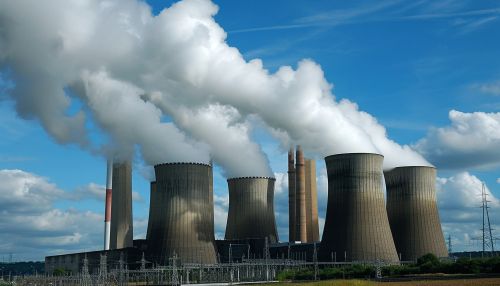Electric power system
Introduction
An Electric power system is a network of electrical components deployed to supply, transfer, and use electric power. An example of an electric power system is the grid that provides power to an extended area. An electric power system must be able to meet the varying demand for power at all times. The total amount of power used by the load is always equal to the power generated by the source as power cannot be stored or saved.
Components of Electric Power System
An electric power system is made up of three principal components: the power station (also known as the power source), the transmission lines, and the distribution system.
Power Station
The power station is where electricity is produced. It uses various energy sources such as coal, natural gas, nuclear energy, solar energy, wind energy, and hydroelectric power. The power station converts these energy sources into electrical energy.
Transmission Lines
Transmission lines are the medium through which the electricity produced at the power station is transported. They are designed to carry large amounts of electricity over long distances.
Distribution System
The distribution system is the final stage in the delivery of electricity to end users. It carries electricity from the transmission system and delivers it to consumers.
Generation of Electric Power
Electric power is generated in power stations. The process of power generation involves converting mechanical power into electrical power. This is achieved using a generator, a machine that converts mechanical energy into electrical energy.
Types of Power Stations
There are several types of power stations, each using a different source of energy to generate electricity. These include:
Thermal Power Station
A thermal power station uses heat energy to generate electricity. The heat is used to produce steam, which drives a steam turbine connected to an electrical generator.
Hydroelectric Power Station
A hydroelectric power station uses the energy of falling or flowing water to generate electricity. The water drives a water turbine connected to an electrical generator.
Nuclear Power Station
A nuclear power station uses nuclear energy to generate electricity. The heat generated from nuclear reactions is used to produce steam, which drives a steam turbine connected to an electrical generator.
Solar Power Station
A solar power station uses solar energy to generate electricity. Photovoltaic cells convert sunlight directly into electricity.
Wind Power Station
A wind power station uses wind energy to generate electricity. The wind drives a wind turbine connected to an electrical generator.
Transmission of Electric Power
The transmission of electric power involves carrying electricity from the power station to the distribution system. This is achieved using transmission lines.
Types of Transmission Lines
There are two main types of transmission lines: overhead lines and underground cables.
Overhead Lines
Overhead lines are the most common type of transmission lines. They are used to transmit electricity over long distances. They are cheaper to install and maintain than underground cables, but they are more vulnerable to weather conditions and other external factors.
Underground Cables
Underground cables are used to transmit electricity in urban areas and other places where overhead lines are not suitable. They are more expensive to install and maintain than overhead lines, but they are less vulnerable to weather conditions and other external factors.
Distribution of Electric Power
The distribution of electric power involves carrying electricity from the transmission system to the end users. This is achieved using a distribution system.
Components of Distribution System
The distribution system consists of several components, including distribution substations, distribution transformers, distribution lines, and service lines.
Distribution Substations
Distribution substations reduce the voltage of the electricity received from the transmission system to a level suitable for distribution.
Distribution Transformers
Distribution transformers further reduce the voltage of the electricity to a level suitable for use by consumers.
Distribution Lines
Distribution lines carry electricity from the distribution substations to the distribution transformers.
Service Lines
Service lines carry electricity from the distribution transformers to the consumers.
Conclusion
Electric power systems play a crucial role in modern society, providing the electricity that powers homes, businesses, and industries. They consist of several components, each performing a specific function in the generation, transmission, and distribution of electric power.


